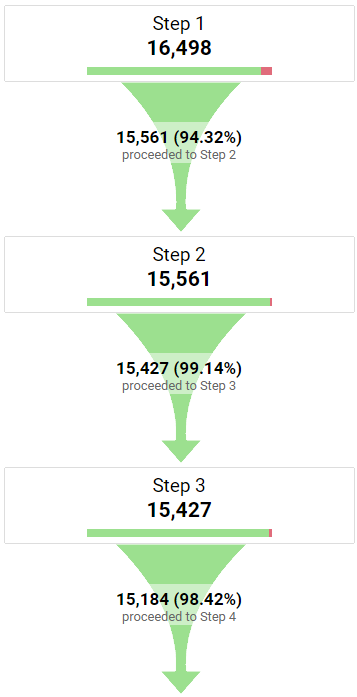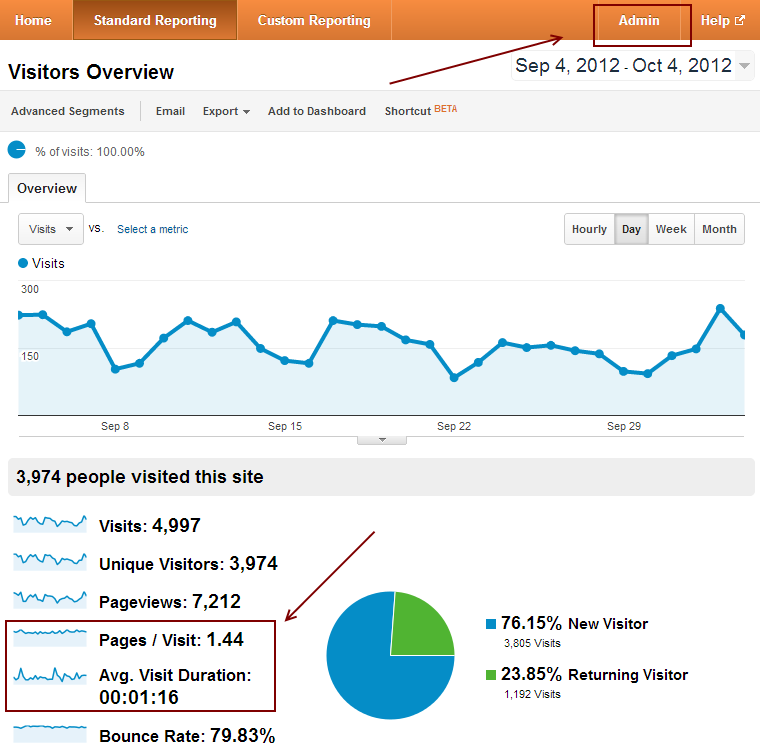What Data Is Google Analytics Goals Unable to Track: Important Details
What Data Is Google Analytics Goals Unable to Track: Important Details
Blog Article
Discover the Limitations of Google Analytics Goals: Revealing the Data Types That Remain Untrackable
As organizations significantly depend on data-driven decision-making, comprehending the constraints of tools like Google Analytics ends up being paramount. While Google Analytics Goals offer useful insights into individual interactions, there exist information types that avoid monitoring, presenting challenges to a thorough understanding of individual actions. These untrackable data kinds raise concerns concerning the accuracy and efficiency of the analytics data that companies heavily rely upon for their digital strategies. Interested to discover the covert dead spots in your data analysis process?
Insufficient Customer Journey Tracking
Insufficient customer trip monitoring within Google Analytics can hinder the ability to precisely examine user actions. When the customer journey is not fully tracked, there are gaps in the data that avoid a thorough understanding of how users communicate with an internet site. This absence of understanding can bring about missed out on chances for optimization and enhancements to the customer experience.
One usual concern with insufficient user journey tracking is the failure to see the complete course that users take previously finishing a goal or leaving the website. Without this details, it is challenging to identify where individuals might be experiencing obstacles or friction points that prevent them from converting. Additionally, insufficient monitoring can cover the influence of particular marketing efforts or internet site changes on user behavior.
To resolve this limitation, it is crucial to establish up appropriate tracking devices within Google Analytics to record the entire user trip. This may involve establishing event monitoring, objective funnels, or using tools like Google Tag Supervisor to make certain that no important interactions go unrecorded. By acquiring an extensive sight of the customer trip, internet site owners can make more educated decisions to improve user involvement and drive conversions.
Attribution Challenges
Navigating via acknowledgment challenges in Google Analytics calls for a thorough understanding of exactly how different touchpoints add to the overall conversion procedure. Acknowledgment challenges emerge from the complexity of modern customer trips, where customers communicate with numerous networks prior to transforming. Google Analytics offers numerous attribution versions like initial touch, last touch, and linear, each offering a different viewpoint on just how debt is designated to touchpoints along the conversion course. However, these designs might not constantly accurately show truth impact of each touchpoint on the conversion.
One usual acknowledgment difficulty is the trouble in attributing conversions to the right source, particularly in instances where individuals communicate with numerous networks before converting. This can lead to mistakes in establishing which advertising efforts are driving the most conversions. Furthermore, cross-device tracking presents one more attribution difficulty, as individuals usually switch between tools during their journey, making it testing to track their communications seamlessly. Marketers have to meticulously analyze and evaluate attribution data to make informed choices and enhance their advertising strategies effectively.
Offline Conversions
Provided the difficulties related to attributing conversions properly in online channels, the dimension of offline conversions presents a substantial opportunity for see this site online marketers looking for a more detailed understanding of their customers' journey. Offline conversions describe actions that clients absorb the physical world, such as making acquisitions in brick-and-mortar shops or over the phone, going to occasions, or engaging with published materials - what data is google analytics goals unable to track. These conversions are crucial for services that operate both online and offline, as they give valuable understandings right into the performance of advertising and marketing projects across numerous touchpoints
Tracking offline conversions generally positioned a significant obstacle for marketing experts, as it was challenging to link these activities back to specific online interactions accurately. With advancements in modern technology, such as the combination of CRM systems, one-of-a-kind identifiers, and discount coupon codes, businesses can now connect the space between online and offline data to gain a more holistic sight of consumer actions. By properly gauging offline conversions, marketers can optimize their methods, allot sources extra successfully, and eventually improve the overall consumer experience.
Cross-Device Monitoring
Cross-device tracking plays a crucial duty in comprehending the interconnected nature of consumers' digital communications across multiple tools. In today's omnichannel world, where customers effortlessly switch over between tablets, desktops, and mobile phones, tracking their behavior throughout these devices is vital for marketing professionals to get a comprehensive view of their consumer journey.

Furthermore, personal privacy worries and guidelines such as GDPR and CCPA have further complex imp source cross-device tracking. With individuals demanding more control over their data and increased restrictions on tracking technologies, marketing experts have to locate innovative and privacy-compliant ways to connect user interactions throughout tools.
Dynamic Web Content Involvement
Recognizing individual engagement with dynamic material is pivotal in enhancing digital marketing strategies for enhanced target market interaction. Dynamic content describes web site aspects that alter based on customer habits, preferences, or other factors, offering a tailored experience. Tracking user communications with dynamic content postures difficulties for traditional analytics devices like Google Analytics.
While Google Analytics can track fundamental interactions like clicks and web page views, it might struggle to record even more nuanced interactions within dynamic content. what data is google analytics goals unable to track. Metrics such as time invested in particular dynamic elements, hover actions, or communications within pop-ups are usually not quickly measurable utilizing conventional tracking methods. This restriction impedes marketing experts' capacity to completely understand how customers are engaging with dynamic content and customize their approaches accordingly

Verdict
To conclude, Google Analytics goals have restrictions in tracking incomplete individual trips, associating conversions properly, recording offline conversions, tracking cross-device communications, and measuring dynamic content engagement. These restrictions highlight the significance of checking out extra tracking techniques and tools to acquire a much more detailed understanding of customer actions and conversions beyond what Google Analytics can provide.
While Google Analytics Goals offer useful understandings right into customer communications, there exist data kinds that avoid monitoring, positioning challenges to a thorough understanding of customer habits.Incomplete user trip tracking within Google Analytics can impede the ability to accurately analyze customer habits. When the individual hop over to here journey is not totally tracked, there are spaces in the data that avoid a comprehensive understanding of just how customers engage with a web site.One common issue with insufficient individual journey monitoring is the failure to see the full course that customers take previously completing an objective or leaving the site. By acquiring a comprehensive sight of the individual journey, website proprietors can make more informed choices to improve individual engagement and drive conversions.
Report this page